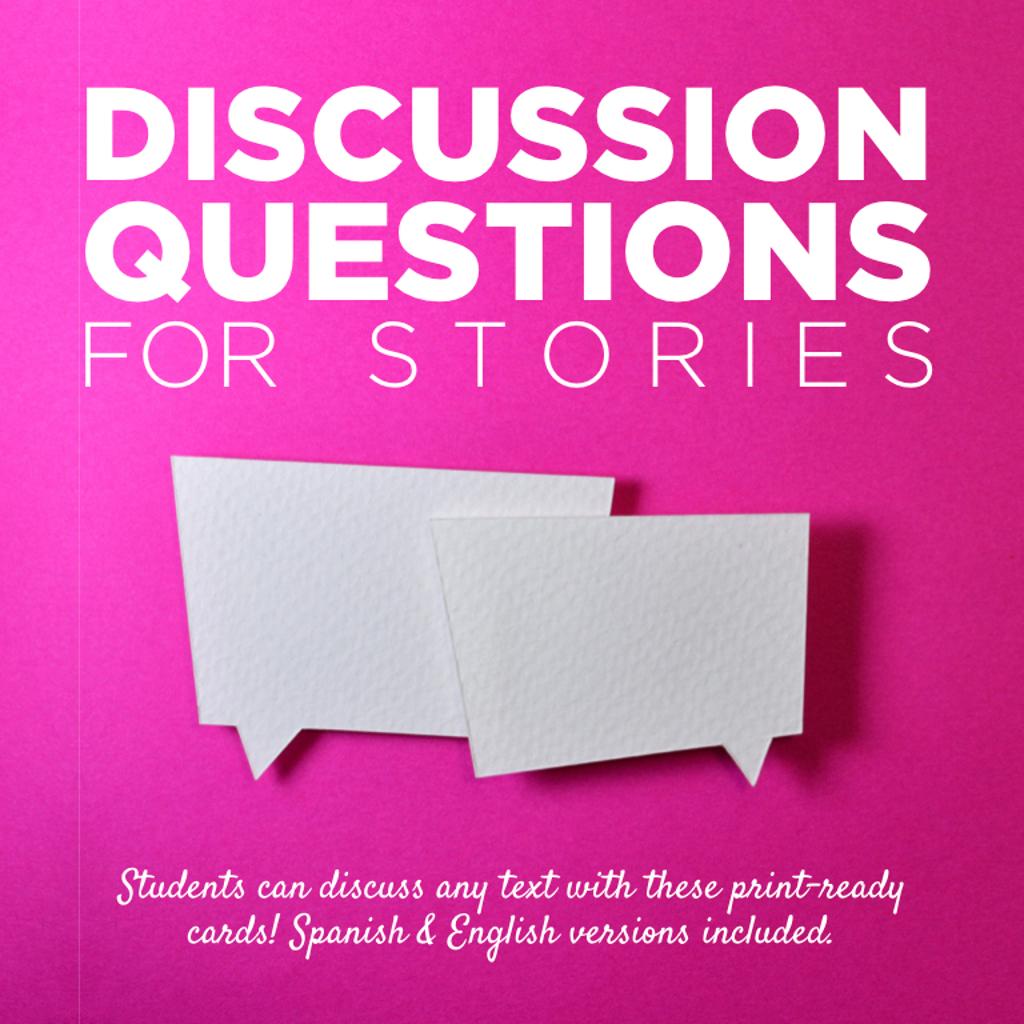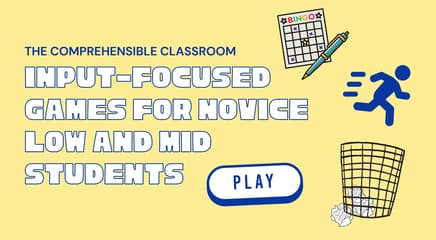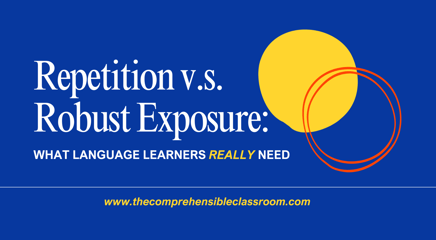I just got back from another Cooperative/Social Emotional Learning class session with tons of ideas from the brilliant minds of my colleagues. The course followed an intensive, full-day workshop with a trainer from Kagan Cooperative Learning, and it is run by the district Director of World Languages, and course credit is offered through University of Alaska-Anchorage.
Each week, we focus on two different Kagan structures. For those of you not familiar with Kagan, each structure is a unique way of grouping students to accomplish a particular kind of task.
One of tonight's focus structures is called "Fan-N-Pick". Fan N Pick is one of the more...involved...Kagan structures, and it is one of my favorites. Fan N Pick is great for World Language classes because it brings in all four modalities: reading, writing, speaking, and listening. As a Comprehension-based™ teacher, I'm very strategic about when and how I use it.

Fan N Pick has a lot of moving pieces, and so it is very complicated to explain to students the first time that you use it. Because I used it regularly in my classes (at least twice per quarter), the time spent teaching students how to complete the activity was well worth it. I'm confident that you will feel the same!
HOW TO FAN N PICK
I do NOT do Fan N Pick in the same way that Kagan teaches it. The change that I have made for my classes (who are doing this activity in L2) come about in the "roles". Here is how I run my adapted version of Fan N Pick in my classes:
THE SETUP
Write out 12 questions about whatever you are learning. It could be questions about a topic (I use it to wrap up our unit of study on Las Madres de la Plaza de Mayo), or it might be questions about a story (ex: if you just finished a chapter or several chapters of Esperanza).
You don't need to write TWELVE questions; you could do more or less. Kagan recommends 12, and I have found that that is a good fit. It keeps the activity going for just the right amount of time!
Be strategic about the questions you ask!
As you are writing the questions, consider how easy they will be for students to answer. Since I have come to believe that we learn language through INPUT, not through OUTPUT, I want to make sure that my use of this activity supports what I know about language acquisition. Having a familiarity with QAR will help you to understand what kinds of questions there are, and consequently what kinds of supports they might need to respond to them successfully.
- If I write exclusively "Right There" questions about a text, I feel comfortable having students jump into Fan N Pick even if we have not yet discussed the questions and answers as a class. I would always give them access to the text.
- If I include other QAR types– especially Author & Me or On My Own questions, I spend time discussing the questions as a class first. When students are asked to answer the questions on their own within the context of the Fan N Pick activity, they have already had a chance to think about what their answer is and perhaps even know how to state it accurately. Lead with input in the form of teacher-led discussion!
Write the 12 questions on cards and make a copy for each group. This resource includes a blank template for you to use as well as several pre-made question sets that can work with any narrative text!
I make each copy on a unique color of paper and, if I plan to use it again in the future, I laminate the cards. Read more here!
To save time, cut apart your cards before class (find a student to help!) and create sets with a paperclip, rubber band, or in envelopes.
IN CLASS
Begin by splitting students into teams of 3 students. If you do groups of 4, one student will not have a role during each rotation, which I don't love.
Assign each student a letter that corresponds with a role:
- (A) Asking the question from the card and/or asking a follow-up question
- (B) Responding to the question
- (C) Recording the response to the question
ROTATION #1
The first rotation is critical! The activities will be repeated 12 times throughout the activity, but the roles will rotate each time. Start with the roles that were assigned for the first rotation:
- Student A (the Asker) fans out the question cards, upside-down, like you would at the beginning of a magic trick ("Pick a card, any card!"), and holds them out to Student B (the Answerer).
- Student B (the Answerer) chooses a question and hands it back to Student A. Student A then reads the question aloud, thereby posing a question to Student B. Student A then hands the card back to Student B for them to reference as they formulate a response.
- Student B ponders his or her answer for [20] seconds, and then he or she responds.
- Student C records Student B's response on these forms.
- OPTIONAL– for Intermediate+ language learners: Student A asks a follow-up question (for another detail, clarification, etc.)
That's it! The first rotation is done.
ROTATE ROLES
When I first tried this, I told my students to rotate roles "to the left", but I found that was too complicated. Instead, I now project this slide for my students:


Once everyone understands their new role (post-rotation), start the second rotation! The student that is now in charge of Asking the questions fans out the deck of question cards to the new Responder, and the activity continues.
How long should you keep it going?
Give the students enough time for everyone to answer at least once--maybe even twice--before stopping the activity. Then, if you want, you can have students write out answers to two or three of the questions that were left over on their own. I do NOT recommend waiting for all groups to get through all 12 questions– you know what they say about idle hands!
Generic questions for Fan N Pick
If you'd rather not spend the time creating questions, use one of these two sets of questions to discuss any story. One set is labeled "Advanced" and includes higher-level thinking questions, while the other is labeled "Basic" and includes low-level questions. Each set is provided in Spanish and in English, so that other language teachers can translate them if desired. There is also a blank template so that you can write other questions to modify the activity for whatever other purpose you may have.
Ways to use Fan N Pick
In our course, my colleagues brainstormed the following possible uses for Fan N Pick:
- Discussing school supplies: what you have/need/want for different classes and why...could be used for just about any new vocabulary set
- Practicing a verb tense: just make sure the questions would require students to answer in the tense that you're practicing
- PQA: Personalized questions to get kids talking about their lives: likes/dislikes, good/bad habits, families, activities, etc.
- Discussing articles...reactions to what you read, comparing/contrasting to other events, etc.
Happy Fanning... and picking!





